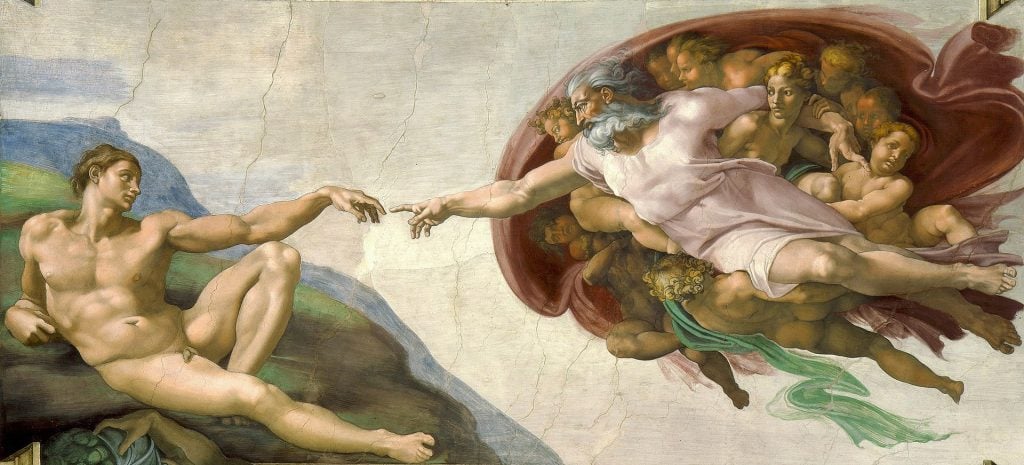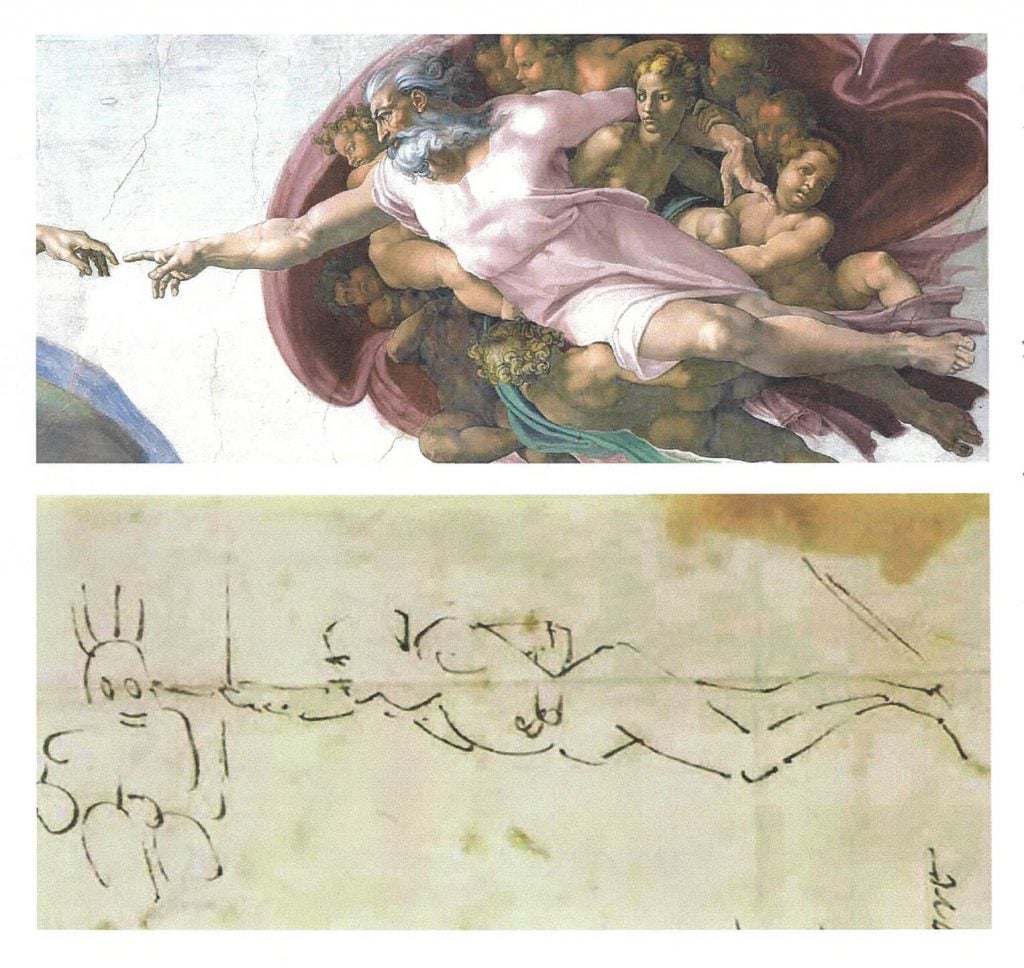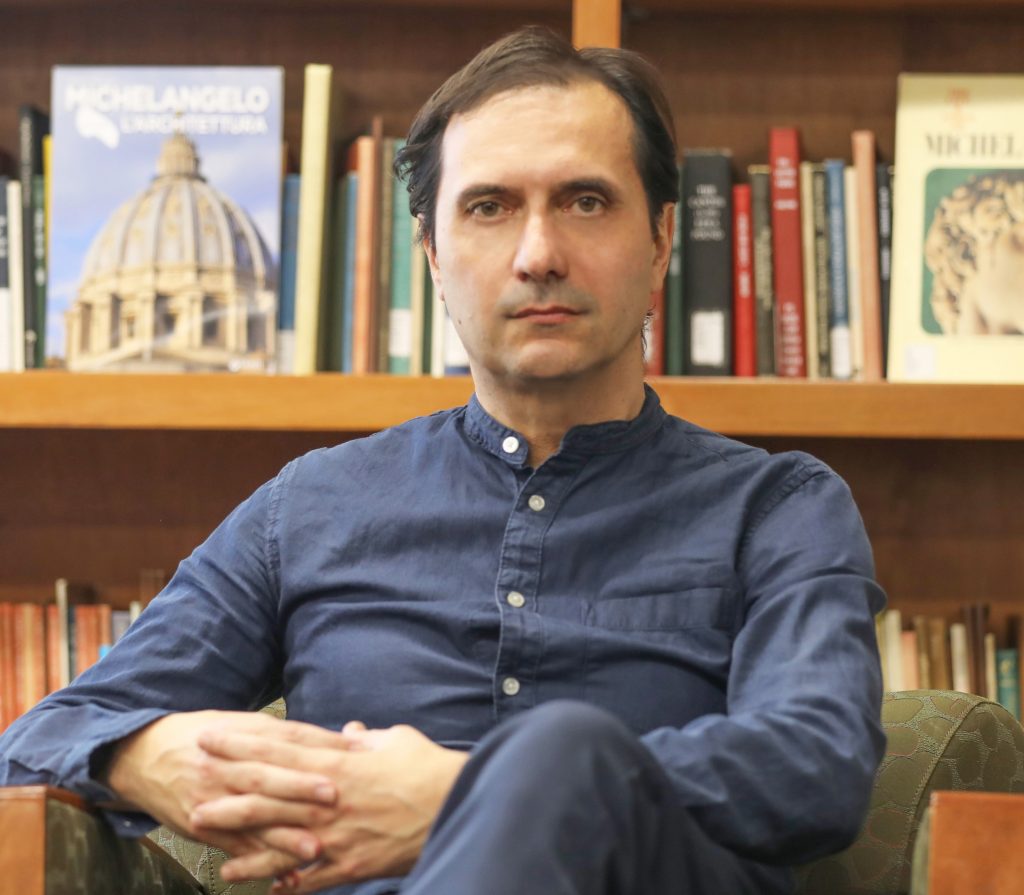Art History
Did Michelangelo Have a God Complex? An Expert Has Suggested That He Painted Himself Into ‘The Creation of Adam’
In a recent paper, the scholar Adriano Marinazzo posited that the artist based his depiction of God on his own likeness.

In a recent paper, the scholar Adriano Marinazzo posited that the artist based his depiction of God on his own likeness.

Taylor Dafoe

In The Creation of Adam, Michelangelo’s masterpiece on the Sistine Chapel’s ceiling, God extends a finger to animate the world’s first man with the spark of life. But what if the famed fresco is actually a self-portrait in disguise?
That’s the new theory posited by Adriano Marinazzo, an expert on the Italian artist, in a recent paper published in the peer-reviewed art journal Critica d’Art. The scholar argues that Michelangelo may have based his depiction of God on his own likeness.
At the foundation of Marinazzo’s theory is a sonnet that Michelangelo penned to his friend Giovanni da Pistoia whilst working on the Sistine Chapel sometime between 1509 and 1511. In it, the artist gripes about the toll the commission has taken on his body. “My haunches are grinding into my guts, my poor ass strains to work as a counterweight, every gesture I make is blind and aimless,” he wrote.
Scribbled in the margins next to the artist’s note is a drawing of a man painting a figure above him, his legs crossed below. For centuries, academics have assumed this to be a self-portrait of Michelangelo himself standing below the chapel’s ceiling. Marinazzo thought so too upon first studying the document at the Casa Buonarroti in Florence years ago.
But in preparing a new class at William & Mary, where he teaches (and works as a curator of special projects at the school’s Muscarelle Museum of Art), the expert revisited a scanned copy of the letter in his archives. It was at that point that he noticed something else: the odd posture of Michelangelo’s self-portrait bared a surprising resemblance to that of God in The Creation of Adam.
Maybe the figure wasn’t just a self-portrait, Marinazzo thought. Maybe it was also a preliminary sketch.

Michelangelo’s The Creation of Adam [top] next to the sketch he drew in a letter to friend Giovanni da Pistoia between 1509 and 1511 [bottom]. Courtesy of Adriano Marinazzo.
The expert also pointed out that, in his self-portrait, the artist idealizes himself with soft features. “But in real life,” Marinazzo explained, “Michelangelo had rough features, characterized by a flattened nose. The profile of the artist is flawless, like that of God.
Though based in scholarship, Marinazzo acknowledged that his “hypothesis is not a black-and-white proposition.”
“My article wants to open a conversation,” he said.

Adriano Marinazzo at William & Mary. Couresy of the author.
Some scholars have been more open to that conversation than others. Paul Barolsky, a Renaissance art historian at the University of Virginia, said in an interview with the Wall Street Journal that he would need more proof to buy in on Marinazzo’s idea.
“Everybody’s got theories, but you’ve got to do better than that,” Barolsky said.
Marinazzo, for his part, is unbothered by the backlash; his ideas about Michelangelo have elicited skepticism before. In 2020, for instance, he suggested that a small wall carving on the façade of the Palazzo Vecchio in Florence was actually the work of the Renaissance master.
“Michelangelo’s scholars are very conservative and protective of their space. It is nearly impossible to propose new radical ideas,” Marinazzo said, noting that some scholars have emailed him with “positive feedback,” but dismissed the hypothesis publicly.
“But I do [propose new ideas. At least, I try,” he went on. “Studying art is supposed to be fun and creative.”
More Trending Stories: